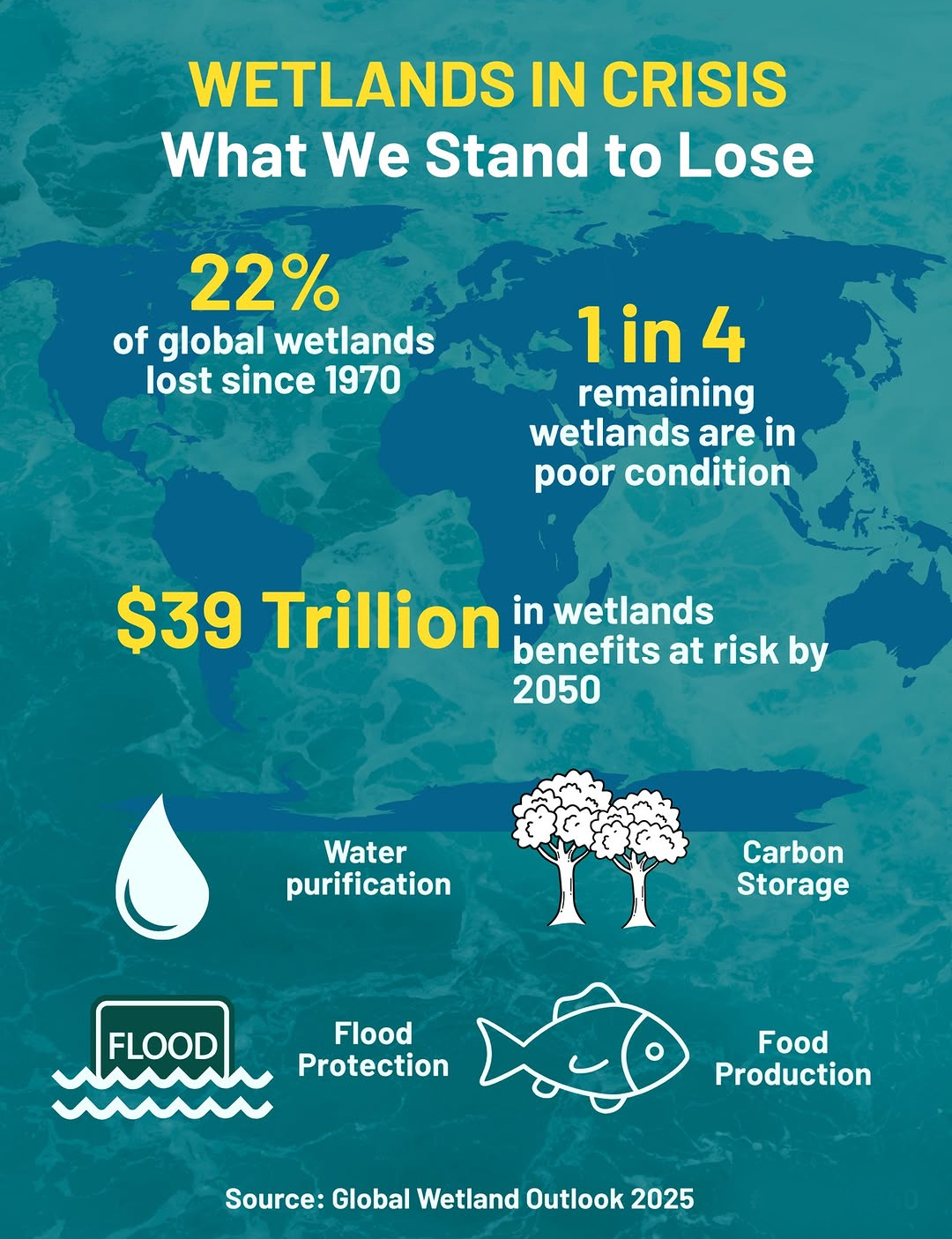Context:
The 2025 Global Wetland Outlook was recently released by the Ramsar Convention Secretariat. The report reveals that wetland ecosystems are disappearing at an alarming rate, with critical consequences for biodiversity, climate resilience, and human well-being.
Key Findings from the 2025 Outlook:
Massive Wetland Loss Since 1970
- The world has lost 411 million hectares of wetlands since 1970 — a 22% reduction in overall extent.
- The average annual global loss rate stands at 0.52%, a figure that continues to rise due to human-driven pressures.
Regional Variations in Degradation
- Wetland decline is most pronounced in Africa, Latin America, and the Caribbean, where the pace of degradation outstrips restoration efforts.
- In North America and Oceania, invasive species pose the greatest threat to wetland health.
- In Europe, drought and climate variability are the key drivers of degradation.
Primary Drivers of Wetland Degradation:
- Urbanization, industrial expansion, and infrastructure development are the dominant causes of wetland loss in the Global South.
- Additional stressors include:
- Agricultural encroachment
- Pollution from industrial effluents and domestic waste
- Water extraction and damming
About Wetlands:
Wetlands are lands where water is the primary factor controlling the environment and the associated plant and animal life. They exist where the water table is at or near the surface or where the land is covered by shallow water.
Despite covering only about 6% of the Earth’s surface, wetlands provide ecosystem services valued between $7.98 and $39.01 trillion annually, including:
- Water purification
- Carbon sequestration
- Flood and coastal protection
- Groundwater recharge
- Biodiversity conservation
However, the report reveals that global biodiversity conservation investments amount to just 0.25% of global GDP, indicating severe underfunding relative to the value wetlands provide.
Case Studies & Regional Initiatives:
Zambia’s Kafue Flats
- A $300,000 wetland restoration project successfully reactivated natural flooding cycles.
- Benefits included enhanced biodiversity, revived fisheries worth $30 million/year, and support for over a million people.
Asia's Regional Flyway Initiative
- A $3 billion international collaboration aims to restore over 140 wetlands critical for migratory birds and local communities.
- This model showcases the power of multilateral conservation financing and shared ecological responsibility.
Policy and Financial Recommendations:
National Planning Integration
The report strongly advocates for mainstreaming wetland protection into:
- Urban and rural planning
- Climate adaptation strategies
- Water management and agricultural policies
Innovative Financing Tools
To bridge the wetland funding gap, the Outlook suggests adopting:
- Green bonds targeting wetland restoration
- Results-based financing models
- Public-private partnerships and blended finance
- Carbon credit markets for wetlands’ role in sequestration
Conclusion:
The 2025 Global Wetland Outlook concludes with a stark warning: the world cannot afford continued neglect of wetlands. These ecosystems are vital for maintaining the global hydrological cycle, sustaining biodiversity, and buffering the climate crisis.
Restoring degraded wetlands is not only a moral and ecological imperative but also an economic opportunity, especially for rural communities and climate-vulnerable nations.
As nations prepare for the 15th Meeting of the Conference of the Contracting Parties to the Ramsar Convention (COP15) in Zimbabwe this month, the report demands ambitious commitments, science-based policy, and innovative financing to halt the wetland crisis before it becomes irreversible.







